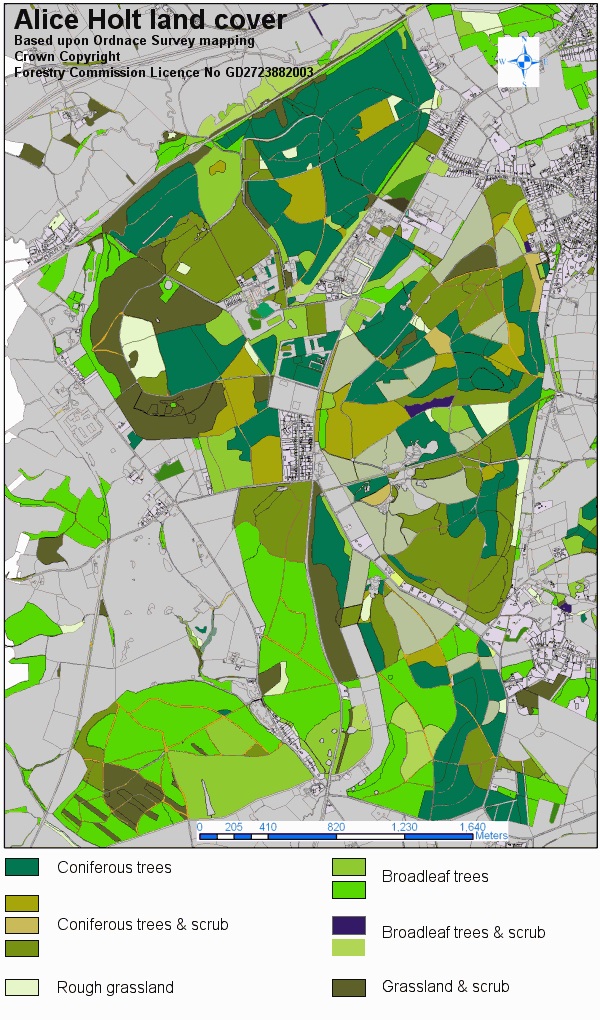Summary
Results of a complete ecological survey of the Straits Enclosure research site are presented for four time points during the 1999-2000 growing season. This survey has enabled four discrete understorey vegetation communities to be identified, covering the majority of the woodland block, based on the past management history. Biomass, annual growth increment and leaf area of understorey shrubs have been estimated for each vegetation community, together with a full species listing.
Research Objectives
- To classify the understorey vegetation of the Straits enclosure into characteristic communities
- To obtain species composition of the defined communities and monitor seasonal change
- To make a reliable leaf area assessment of each community at four time intervals in the year
- To produce similarly spaced estimates of biomass of the understorey components
- To estimate woody biomass increment for each of the vegetation communities.
Methodology
A qualitative walking survey of the 90 ha woodland block was carried out in May 1999. Four distinct vegetation communities were identified. Three 10 m by 10 m plots were established in each community for random sampling using one square metre ground quadrats. Estimates of cover and abundance according to the Braun-Blanquet system were made, together with additional notes on stem length, seedling and sapling height, and the incidence of flowering and fruiting.

This survey was repeated four times in the year, with above ground biomass harvested from the quadrats and dry weights and specific leaf area (SLA) measured for up to 30 species at each sampling point. Biomass and SLA data enabled the calculation of leaf area index for each of the understorey vegetation communities. For ease of analysis, the species list was grouped into categories of:
- Woody shrubs and trees
- Perennial climbers
- Soft stem herbs (both annual and biennial)
- Grasses and sedges
- Rushes and ferns.
Latest Update
Key findings include:
- Measurements of understorey leaf area index range between 2.3 and 3.6, depending on the vegetation community, with standing biomass values between 2.0 and 8.3 t/ha.
- Foliage turnover of the ground flora was 0.8 to 1.3 t/ha and incremental woody growth in the understorey varied between 0.5 and 1.1 t/ha.
- Compared to the overstorey LAI of 5.5-6.0 measured above, indicate the importance of the understorey to stand carbon balance, particularly in relation to flux modelling and NPP studies.
- Predictions can be made as to future changes, as the varying makeup of understorey vegetation reflects a chronosequence over the time elapsed since management intervention.
- The record of species occurrence in the various plots has set a baseline for future biodiversity research in this woodland block.
The results of this project have been summarised on this page
A detailed report of the results of this study are available as PDF download here
ECN news article
UK’s rarest earthworm species found in ECN Alice Holt forest
